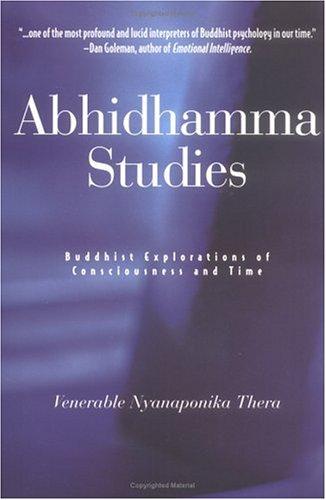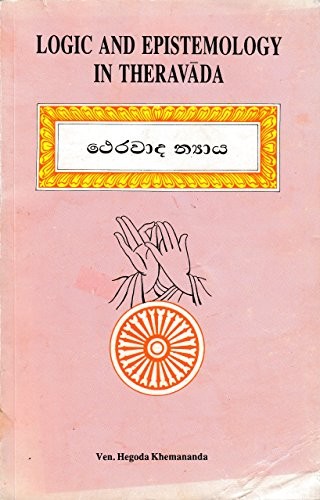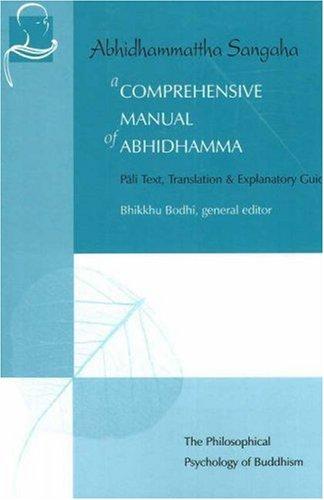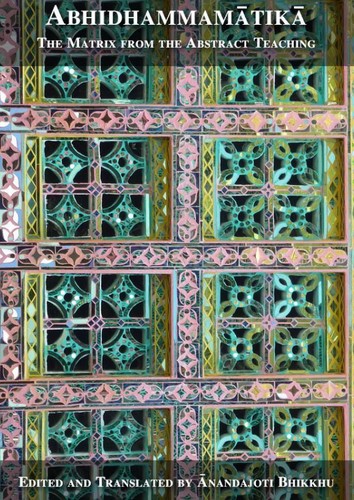Abhidhamma
Subscribe to this topic via: RSS
The Third Piṭaka of the Pāḷi Canon and the Theravāda metaphysical system.

In this Thai mural, the Buddha is depicted as preaching the Abhidhamma to his mother in heaven. This fanciful origin story is used by the Theravada tradition to authorize the Abhidhamma as Buddhavacana despite its late provenance. (©️ Photo Dharma Thailand, CC BY 2.0)
Table of Contents
Books (10)
Featured:
-
⭐ Recommended
-
Three interpretations of bhavaṅga have been taken up for discussion. One is as found in the Netti that bhavaṅga designates each link of twelve factors of dependent co-arising in the context of āsava, which together produce bhava. Psychological and cosmological interpretations of bhava have been studied. […] The third interpretation occurs in the commentaries that bhavaṅga-consciousness is luminous and pure, it is a natural consciousness and all beings pass away with this state of consciousness.
-
A collection of talks on the Abhidhammatthasaṅgaha by an unknown Burmese monk.
-
… all are his fellow-passengers in the great journey of life, subject to the same universal laws and fundamental principles to which he himself is subject.
-
Two essays on the meaning of the Abhidhamma:
44 pages -
Pāli and English interlinear translations of selected Abhidhamma verses often chanted in Thailand.
See also:
Canonical Works (9)
Featured:
-
The first book of the Abhidhammapiṭaka.
449 pages -
The Theravāda Abhidhamma’s Canonical analysis of Dependant Arising.
-
The Theravāda Abhidhamma’s Canonical analysis of Satipaṭṭhāna Meditation.
-
The introduction to the Paṭṭhānapāḷi, the last book of the Abhidhamma, which sets out the conditions of the mind.
See also:
Readings (18)
Featured:
-
⭐ Recommended
I’m gripped by a somewhat peculiar trepidation as I tiptoe into the hallowed portals of the abhidhamma, my feet echoing too loudly in the cavernous austerity.
-
There are, in short, 89 types of consciousness. They are fourfold. How? (i) Moral, (ii) Immoral, (iii) Resultant and (iv) Functional in classification.
-
If bhavaṅga is “unconsciousness”, then it certainly is not unconsciousness in the sense of a mental blank. In fact bhavaṅga is understood in the texts as in most respects sharing the same properties as other types of consciousness; bhavaṅga is not something different from consciousness, rather it is consciousness operating in a particular mode
-
In order to reach a proper understanding of the Buddha’ s Teaching, it is necessary to discover exactly what is meant by the five aggregates of clinging. For these are, as we see, dukkha…
-
So if Americans are to understand Buddhist forms of meditation and if Buddhism is to be transferred successfully to America, Americans must understand sati development correctly. Unfortunately, such understanding is difficult to attain because of the great differences in language, philosophy and “worldview”
-
The Abhidhamma Piṭaka reflects the scholastic nature of its origin: the teachings in teachable form. Because of its complexity it outgrew this early role…
-
Although you do not move…
See also:





